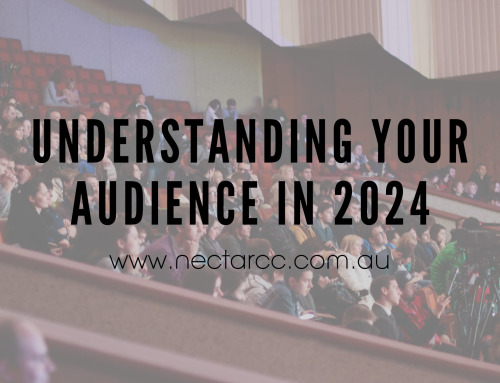It’s time to face the facts. We’re more time poor than ever before and more than likely a tad sleep deprived. Not to point any fingers but I blame Australia’s work culture and a certain pandemic that changed the way we work…Zoom exhaustion is a thing!
Professor Drew Dawson from CQ University surveyed 13,000 Australians sleep habits. He revealed that 96% of respondents felt tired and almost 40% had recently fallen asleep at their desk or during a meeting.
Statistics such as these highlight the issues that event managers encounter on a day to day basis. Our delegates are tired, have shortened attention spans and demand to be engaged. They are chained to their mobile devices, a constant and demanding distraction. They are also on the lookout for authentic, tangible and often shareable experiences.
How can our events and conferences compete with that?
My answer: think substance over style. Meaning the success of your event will be defined first by it’s content and then how it’s delivered.
Let’s face it, it’s the promise of compelling and relevant content that attracts the delegates in the first place. I’m not saying that the event delivery and all the bells and whistles that go with it aren’t important – but without substance I believe the delegates will be left wondering ‘what’s the point?’
What are your event objectives?
To get started, you’ll need to be clear on your event objectives. You’ll need to take into account the time and money you’re going to invest in this project. You will need to think about the behaviour you want to drive, the audience you want to engage and identify the business/social/industry impact you want to achieve.
What’s your “picture of success”?
Once you’ve got a clear idea of what you want to achieve, you need to drill down and make it measurable. We call this the “picture of success”! To do this, some like to use the SMART (Specific, Measurable, Attainable, Realistic and Timely) method to create goals. Another, often simpler way to define measurement around your objectives is asking ‘when are you satisfied?’ Wherever possible, ensure you include a number or percentage in the answer.
Who is your “dream delegate”?
To create an event or conference with maximum impact, you need to live and breathe your “dream delegate”. What do they want, what motivates them and what can the conference do for them? You will need to build a psychographic profile to compliment the demographics. This will form a complete audience empathy map.
Map the Delegate Journey
The next step is to visualise the delegate journey. With the event objectives clearly defined, and an intimate understanding of your audience, you can create the event story by designing the flow of the content. Start by looking at your empathy map, create an idea around a particular audience ‘want or need’. Piece by piece you can build the journey your event is going to take the delegates on. You will want to create a program filled with those ‘lean forward’ moments when the delegation is completely immersed in the content, not their phones.
At this stage, you need to have a reality check – it had to happen eventually. Take the delegate journey you’ve mapped and cross check it against your objectives. Look at your proposed event program and ask yourself…
- Are you targeting the right audience?
- Will the event have the desired impact?
- Will the event drive the desired behaviour?
- Is the event environment suitable for focussed learning and inspiring delegates?
Choose substance over style when you start planning your event and you’re well on the road to success!
By asking the right questions, you won’t be that conference that is defined by a “I want a high profile personality to drive ticket sales” attitude. You will have the building blocks to develop a compelling program that resonates with your target audience. You will also be in a position to plan the delivery of the content to ensure it supports the event objectives, and enhances the overall delegate experience. Choose substance over style when you start planning your event and you’re well on the road to success!
*This article was published in Australia’s leading business tourism industry publication, Micenet magazine in January 2018. Written by Peta Moore from Nectar Creative Communications. Republished with updates in April 2022.








